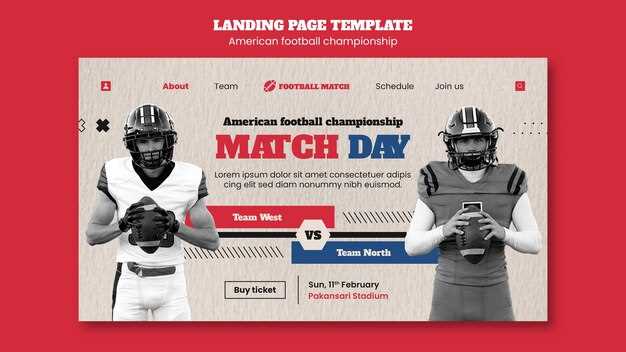Begin with a precise niche: professionals aged 28–42 in metro areas who seek serious relationships. Create a lean dating-service offering: curated introductions, a structured intake, and a 6‑week engagement plan. Pricing includes $29–49 monthly plans, a premium tier at $79–129, plus a $199 onboarding fee. In the first 8 weeks aim for 150 paying members and a 60–70% monthly retention rate. Clarity of value drives conversions.
Design a data-driven intake: collect 12 questions on values, lifestyle, and relationship goals; apply a simple scoring rubric to present clients with 2–4 vetted introductions per cycle. Team setup: 1 dedicated relationship consultant per 25 clients to keep quality high. Track lead time from signup to first intro, target under 14 days. Five key metrics to monitor: signup rate, interview completion rate, match rate, conversion to paid, and retention.
Acquire clients through diversified channels: landing pages, content marketing, partnerships with life coaches and therapy professionals, plus a referral program. Goals: cost per lead $5–$15, landing-page conversion 4–6%, email drip open rate 25–35%, click-through 8–12%, referral incentive 20% off. Run iterative tests monthly to sharpen messaging and offers.
Run operations with privacy in mind: store only essential data; encrypt data in transit and at rest (TLS); hash passwords; perform regular backups; implement a clear data-retention policy; comply with GDPR et CCPA when serving EU or CA users; enforce strict access controls and maintain audit logs.
Plan for growth and milestones: target 1,000 paying members by month 12; reach break-even around months 9–12 with steady CAC; monitor monthly churn and aim for 4–6%. Use client surveys to refine the offering; set quarterly revenue targets and keep marketing spend under 50% of lifetime value to sustain momentum.
Define your niche and ideal client profile
Target a single, underserved segment with tangible willingness to invest in a curated dating service. Validate demand with a quick research sprint: 80–120 survey responses and 15–20 in-depth interviews across two metro areas within four weeks.
Niche criteria should include geography, age band, income level, and dating goals. Example: urban professionals aged 28–42, income above $120k, seeking a committed relationship, valuing privacy, and with limited time for social life. Exclude those pursuing casual dating or with highly irregular schedules.
Ideal client persona helps crystallize messaging. Create a profile like: Alex, 34, software engineer in Seattle, earns $140k, single, active in community events, time-constrained, prefers professional introductions, values discretion and compatibility, and is willing to invest in a structured process. Map preferences: location radius, education level, hobbies, deal-breakers, and must-have traits.
Pricing and service scope should align with the persona and the level of personalization. Offer tiers such as Essentials (up to 6 curated introductions per month with brief coaching), Core (12 matches per month with biweekly coaching and profile optimization), and Elite (24 matches with weekly coaching, background checks, and meeting logistics). Fees should reflect screening depth, privacy protections, and expected outcomes. Include a simple ROI calculation: average client lifetime value minus monthly service fees.
Messaging and positioning should emphasize proprietary intake, curated matches, discretion, and measurable progress. Craft a concise value proposition: “We deliver compatible introductions through structured intake, rigorous screening, and thoughtful match curation for busy professionals.” Focus on process transparency, confidentiality assurances, and concrete milestones rather than guarantees.
Channel and lead-gen plan prioritizes referrals from satisfied clients, partnerships with upscale venues, and targeted campaigns on LinkedIn and Instagram. Use anonymized case highlights and process walkthroughs to demonstrate credibility. Set monthly lead targets based on capacity, for example 40 qualified inquiries with a 25% conversion to consultations.
Quality controls are essential: implement a thorough intake questionnaire, explicit data usage consent, and a trial consultation. Track KPIs such as inquiry-to-consultation rate, consultation-to-signup rate, average matches per month, and client retention over 12 months. Reassess the niche after 90 days of real results and refine the persona accordingly.
Design a repeatable intake and matching workflow
Use a capped, two-minute intake form that captures 20–25 data points and automatically routes to a three-stage flow with defined SLAs.
Data you collect should be structured and validated at entry. Include the following fields:
- Contact details: name, email, phone, time zone
- Demographics: age, city, relationship status
- Relationship goals: long-term, short-term, non-negotiables
- Must-haves and deal-breakers: non-negotiables and preferences
- Preferences: preferred communication channel, languages, age range, location radius
- Lifestyle indicators: smoking, alcohol use, pets, exercise frequency
- Availability: mornings/afternoons, weekly rhythm
- Core values and interests: values keywords, hobbies
- Interest level and consent: permission to use data and be contacted
Data handling and quality rules:
- Identity verification: optional photo or ID for high-value introductions
- Mandatory fields validation: no blank critical fields, correct formats
- Enrichment sources: verify email domain, format phone numbers, capture social handles when available
Matching rubric and weights (default values):
- Goal alignment 25%
- Location proximity 15%
- Lifestyle compatibility 15%
- Values fit 15%
- Communication style compatibility 10%
- Availability alignment 10%
- Past outcomes and feedback 5%
Automation and human review:
- Run auto-match against the rubric and surface top 3–5 candidates
- Flag borderline cases for human review within 48 hours
- Store rationale and notes for each suggested pairing
- Escalate to a human specialist when new data changes the scoring by more than 10%
Scheduling and outreach:
- Provide tailored intro templates per channel (email, text, calendar invite)
- Link scheduling to available time slots and time zones
- Send automated reminders if there is no response after 3 days
Calibration and governance:
- Review weights monthly using outcome data and satisfaction signals
- Audit data retention, opt-in status, and consent logs
- Maintain versioned rubric and preserve escalation notes
Key performance indicators:
- Time to first contact: target ≤ 24 hours
- Intake completeness: ≥ 95%
- Initial pairings accepted for introduction: ≥ 40%
- Taux de réponse sous cinq jours: ≥ 60%
- Touches moyennes avant la confirmation : < 5
Définir les prix, les offres et les étapes de l'intégration des clients
Recommandation: mettre en œuvre un cadre de tarification à trois niveaux avec des frais d'installation fixes, des honoraires mensuels et une prime basée sur la performance, le tout avec des livrables et des délais de réponse clairement définis. Utiliser des niveaux nommés tels que Starter, Growth et Elite, et publier un calendrier concis des étapes clés pour la visibilité du client.
Structure de prix: Le forfait de démarrage comprend une configuration de 1 250 $ et un montant mensuel de 450 $; le forfait Croissance comprend une configuration de 2 900 $ et un montant mensuel de 1 100 $; le forfait Élite comprend une configuration de 5 500 $ et un montant mensuel de 2 000 $. Prime de rendement en option : 5 à 8 % de la valeur du premier engagement ou un montant forfaitaire de 1 000 $ si une contrepartie payante est confirmée dans les 60 jours. Conditions de paiement : 50 % au départ, 50 % une fois les étapes d’intégration atteintes. Offrez un forfait annuel avec deux mois gratuits pour un engagement initial.
Étapes d'intégration:
Étape 1: Accord signé et formulaires de confidentialité remplis en 1 jour ouvrable.
Étape 2: Questionnaire d'admission rempli (objectifs, valeurs, points bloquants, préférences) et données de profil de base saisies dans un délai de 2 jours ouvrables.
Étape 3: Appel d'alignement de 60 minutes et validation des objectifs ; l'étalonnage des préférences est finalisé dans les 3 jours ouvrables suivant la réception.
Étape 4: Actifs rassemblés (photos, biographies) et profils optimisés dans le système en 5 jours ouvrables.
Étape 5: Première liste restreinte livrée (3 à 5 profils sélectionnés) dans les 7 à 10 jours ouvrables suivant la réception.
Étape 6: Première introduction envoyée aux prospects sélectionnés dans un délai de 10 à 14 jours ; les réponses sont suivies et enregistrées.
Étape 7: Boucle de rétroaction après la date initiale ; ajustements du plan effectués dans les 7 jours suivant la date.
Étape 8: Options de renouvellement ou de mise à niveau examinées à la fin de la durée initiale, avec des prochaines étapes claires.

 Démarrez une entreprise de mise en relation">
Démarrez une entreprise de mise en relation">


 Pièges des applications de rencontre">
Pièges des applications de rencontre">
 Crise de solitude et rencontres">
Crise de solitude et rencontres">
 Devenez marieur">
Devenez marieur">